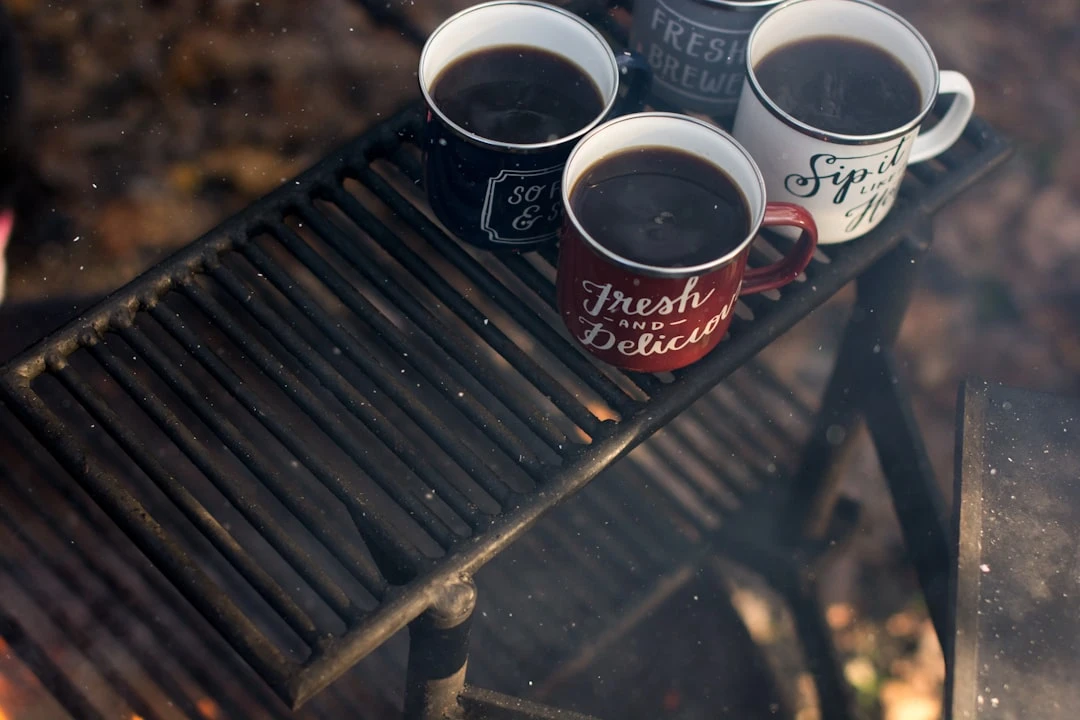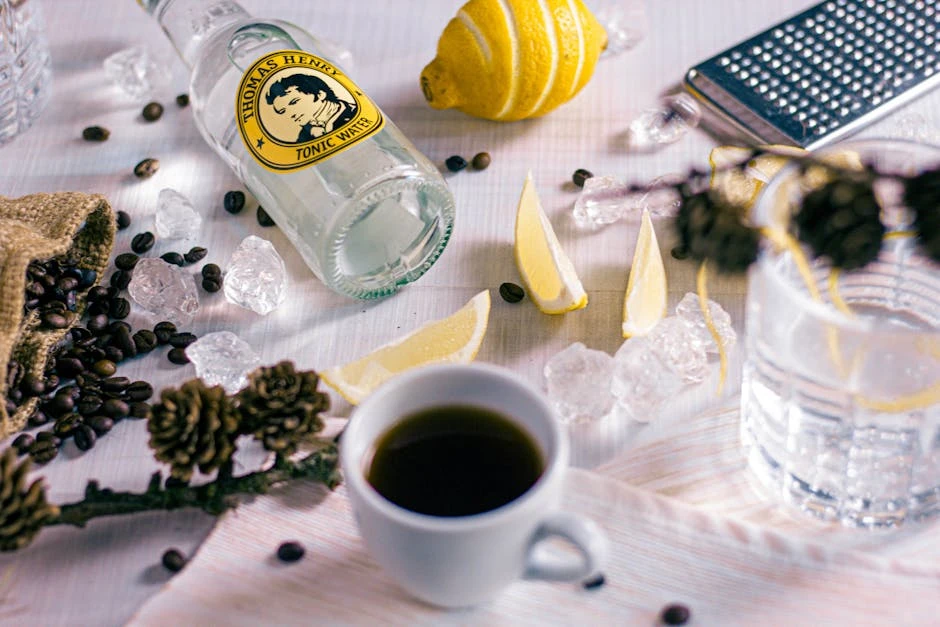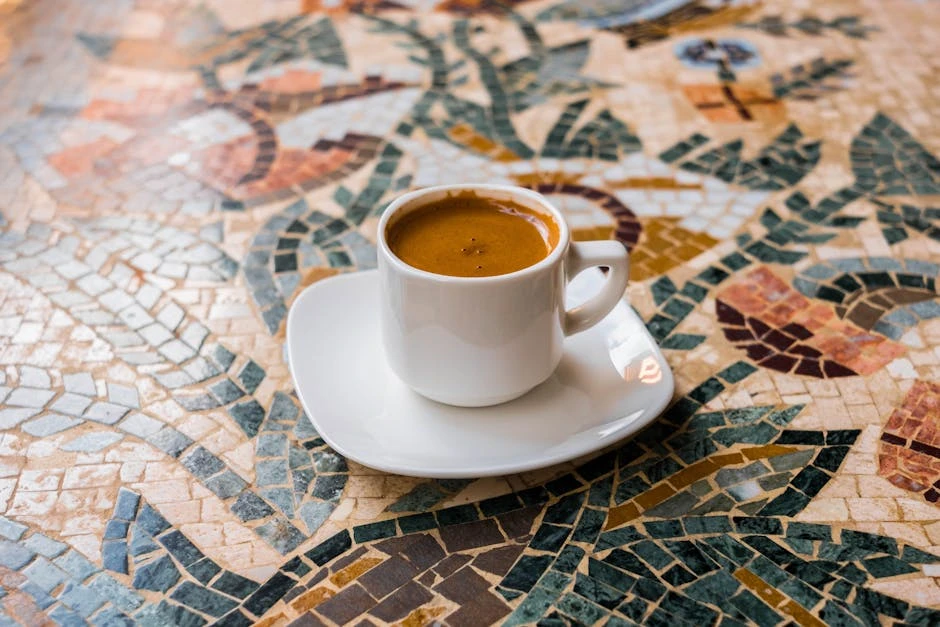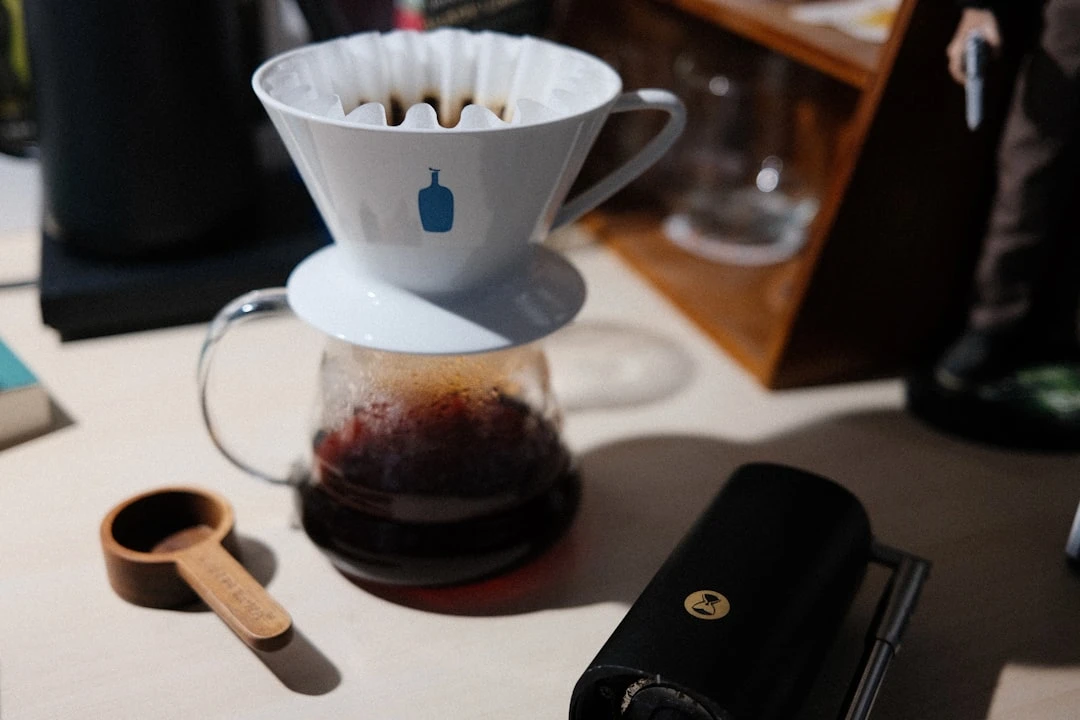How to Make Cold Brew Concentrate Recipe: The Ultimate Guide for Coffee Lovers

Did you know that cold brew coffee sales have grown by over 580% since 2011? I'm not surprised – once you taste that smooth, rich flavor, there's no going back to regular iced coffee.
I'll never forget my first sip of real cold brew concentrate. It was at this tiny coffee shop in Portland, and I was blown away by how different it tasted from the bitter, watery iced coffee I'd been making at home. The barista told me their secret: they made concentrate that could last for weeks and just diluted it as needed. That's when I knew I had to figure this out for myself.
Making cold brew concentrate isn't just about having great coffee – it's about convenience, cost savings, and having that perfect cup ready whenever you need it. Unlike regular cold brew that you drink straight, concentrate gives you flexibility. You can make it strong once, then customize each cup exactly how you like it.
In this guide, I'm gonna walk you through everything I've learned about making cold brew concentrate at home. We'll cover the exact ratios, the equipment you actually need (spoiler: it's less than you think), and all the mistakes I made so you don't have to. By the end, you'll have a foolproof method that'll save you money and give you better coffee than most shops.
What is Cold Brew Concentrate and Why You Need It
Cold brew concentrate is basically cold brew coffee's stronger, more practical cousin. While regular cold brew uses a 1:4 or 1:5 coffee-to-water ratio, concentrate bumps that up to 1:2 or even 1:1. This means you're getting a super-concentrated coffee that you dilute when you're ready to drink it.
I used to think this was just some fancy coffee shop trick, but it's actually genius for home brewing. When I first started making cold brew, I'd make these huge batches that took up half my fridge. Then I'd have to drink it all within a few days before it went stale. With concentrate, I make one batch that lasts me two weeks, and it takes up way less space.
The other game-changer is consistency. Every cup tastes exactly the same because you're controlling the dilution each time. No more guessing whether today's batch turned out right – the concentrate is your constant, and you just adjust the water or milk to taste.
Here's something that really opened my eyes: a 12-ounce cold brew at Starbucks costs about $3.50. With concentrate, I can make the equivalent for maybe 60 cents. That adds up fast if you're like me and need your cold brew fix daily. Plus, you know exactly what's going into it – no weird additives or mystery ingredients.
The brewing process is also more forgiving with concentrate. Since you're using more coffee grounds, small variations in grind size or steeping time don't throw off the final product as much. It's like having a buffer zone that makes your brewing more foolproof.
Essential Equipment for Making Cold Brew Concentrate
You don't need to break the bank to make amazing cold brew concentrate. I learned this the hard way after buying a $80 cold brew maker that honestly didn't work any better than my basic setup. Let me save you some money and tell you what actually matters.
The most important thing is your brewing container. I use a large mason jar – the 64-ounce ones work perfectly for a standard batch. They're cheap, easy to clean, and the wide mouth makes it simple to add coffee and water. I've tried fancy brewing vessels, but honestly, mason jars just work.
For straining, you need something fine enough to catch all the grounds. I started with regular coffee filters, which worked okay but took forever. Then I discovered nut milk bags – they're like five bucks on Amazon and make straining so much easier. You just pour everything through, give it a gentle squeeze, and you're done in minutes instead of hours.
A good coffee grinder is crucial, but it doesn't have to be expensive. I use a basic burr grinder that cost about $40. The key is getting a consistent coarse grind – think sea salt or breadcrumbs. Blade grinders can work too, just pulse them so you don't end up with powder.
Here's a mistake I made early on: using the wrong measuring tools. Eyeballing coffee grounds is a recipe for inconsistent results. Get a kitchen scale if you don't have one. It's way more accurate than measuring cups, and you'll get the same strength every time. Digital scales that measure in grams are perfect and cost maybe $15.
One thing I wish someone had told me: have a second container ready for your finished concentrate. I used to strain directly into the same jar I brewed in, which meant I couldn't get every last drop. Now I strain into a separate pitcher, then transfer to whatever storage container I'm using. Makes the whole process smoother and you don't waste any of that liquid gold.
The Perfect Cold Brew Concentrate Recipe
After probably 50 batches and way too much trial and error, I've finally nailed down the perfect ratio. Here's my foolproof recipe that works every single time.
You'll want a 1:2 ratio of coffee to water by weight. That means 1 cup of coarse ground coffee to 2 cups of cold water. In terms of actual measurements, I use 4 ounces (about 115 grams) of coffee grounds to 8 ounces (1 cup) of water. This creates a concentrate that's strong enough to dilute but not so intense that it's undrinkable.
Start by grinding your beans coarse – think sea salt consistency. I made the mistake of grinding too fine my first few attempts, and the concentrate turned out bitter and over-extracted. Coarse grounds let the water extract the good flavors slowly without pulling out the harsh compounds.
Add your coffee grounds to your brewing container first, then pour the cold water over them. I use filtered water because our tap water is pretty hard, but honestly, if your tap water tastes good, it'll make good cold brew. Stir everything together – I use a wooden spoon so I don't accidentally crack my mason jar.
Here's something that took me way too long to figure out: all the grounds need to be saturated. After stirring, let it sit for about 5 minutes, then stir again. You'll probably see some dry grounds floating on top that didn't get wet the first time. This second stir makes sure everything's properly extracted.
Now comes the hardest part – waiting. Let this steep in your fridge for 18-24 hours. I usually start a batch before bed and strain it the next evening. Don't go longer than 24 hours though – I tried 36 hours once thinking it would be even stronger, but it just tasted muddy and bitter.
When it's time to strain, pour everything through your nut milk bag or fine mesh strainer lined with coffee filters. Don't press or squeeze the grounds – just let gravity do its work. This might take 20-30 minutes, but it's worth the wait for clean, smooth concentrate.
Choosing the Right Coffee Beans for Cold Brew
The coffee you choose makes a huge difference in your final concentrate. I've tried everything from gas station beans to fancy single-origins, and there's definitely a sweet spot that won't break your budget.
Medium to medium-dark roasts work best for cold brew concentrate. Light roasts can taste too acidic and thin when diluted, while very dark roasts sometimes come out too bitter. I learned this after a disappointing batch made with some French roast beans that tasted like liquid charcoal.
Single-origin beans are nice if you want to get fancy, but honestly, a good quality blend works just as well and costs way less. I buy my beans from the local roaster when I'm feeling fancy, but my everyday go-to is a medium roast blend from Costco. It's consistent, affordable, and makes great concentrate.
Freshness matters more than you might think. Beans start losing flavor about 2-4 weeks after roasting. I used to buy pre-ground coffee to save time, but it made such a difference when I started grinding fresh beans. The aroma alone tells you everything – fresh beans smell amazing, stale ones smell like cardboard.
Here's something that surprised me: expensive doesn't always mean better for cold brew. Some of those $20-per-pound specialty beans that are incredible as espresso don't shine in cold extraction. The cold brewing process mellows out a lot of the subtle flavors that make expensive beans special. Save your money and stick to good quality, medium-priced beans.
If you're buying in bulk like I do, store your beans properly. I keep them in an airtight container away from light and heat. Don't put them in the fridge – the humidity actually makes them go stale faster. Room temperature in a sealed container keeps them fresh for weeks.
Cold Brew Concentrate Brewing Time and Technique
Getting the timing right was probably my biggest challenge when I started making cold brew concentrate. I tried everything from 12 hours to 48 hours, and there's definitely a sweet spot that gives you the best flavor.
Eighteen to twenty-four hours is the magic window. Less than 18 hours and your concentrate will be weak and underdeveloped. More than 24 hours and you start extracting bitter compounds that make the whole batch taste harsh. I usually start my batches around 8 PM and strain them between 6-8 PM the next day.
Temperature matters too, but not as much as I thought it would. Room temperature water works fine, but cold water from the fridge actually extracts more evenly. I tried using hot water to speed up the process once – big mistake. It extracted too fast and the concentrate tasted bitter and over-extracted.
The steeping location makes a difference. I keep my brewing jar in the fridge during the steeping process. Some people leave it on the counter, but I found that fridge steeping gives me more consistent results. The cold temperature slows down extraction, which means you get the good flavors without the harsh ones.
Stirring during the steeping process is something people argue about. I tried both ways, and honestly, I don't think it makes a huge difference. I give it one good stir at the beginning to make sure all the grounds are wet, then leave it alone. Some people stir every few hours, but I haven't noticed better results with that method.
Here's the part that took me forever to get right: straining technique. Don't rush this step. I used to try to squeeze the bag or press the grounds to get every last drop, but that just pushes bitter compounds into your concentrate. Let gravity do the work, even if it takes longer. The result is much cleaner and smoother.
For the clearest concentrate, I do a two-stage strain. First through the nut milk bag to catch the big grounds, then through a coffee filter to get any fine particles. This extra step takes maybe 10 more minutes but gives you concentrate that looks almost like black tea instead of muddy water.
How to Store and Use Your Cold Brew Concentrate
Proper storage is crucial for getting the most out of your concentrate. I learned this lesson the hard way when I left my first batch in the original brewing jar and it went bad after just a few days.
Glass containers work best for storage. I use mason jars or glass bottles with tight-fitting lids. Plastic containers can absorb flavors and odors, which affects the taste over time. The concentrate should be stored in the refrigerator – never leave it at room temperature where bacteria can grow.
Fresh cold brew concentrate lasts about two weeks in the fridge, but honestly, it tastes best in the first week. I write the date on my containers because it's easy to forget when you made it. After two weeks, it's not dangerous to drink, but the flavor starts to get stale and flat.
For serving, the standard dilution is 1:1 – equal parts concentrate and water or milk. But this is where you can customize everything. I like mine a bit stronger, so I do 2 parts concentrate to 1 part water. My wife prefers it milder at 1 part concentrate to 2 parts milk. Experiment to find your perfect ratio.
Ice is important too. Add ice to your cup first, then the concentrate, then your dilution liquid. This prevents the concentrate from getting watery as the ice melts. I make coffee ice cubes sometimes – just freeze leftover regular coffee in ice trays. They keep your cold brew strong as they melt.
Here's a pro tip that changed my morning routine: portion out your concentrate. Instead of one big container, I sometimes divide it into smaller jars with single-serving amounts. Grab one jar, add your milk or water, and you're done. It's especially helpful when you're rushing in the morning.
The concentrate also freezes well if you want to make bigger batches. Pour it into ice cube trays and freeze, then transfer the cubes to freezer bags. Each cube is usually about the right amount for one drink – just add water and let it thaw. I did this during summer when I was going through concentrate faster than I could make it.
Troubleshooting Common Cold Brew Problems
Even with the best recipe, things can go wrong. I've made every mistake possible, so let me help you avoid the frustration I went through.
If your concentrate is too weak, the most common cause is not enough coffee grounds. I used to try to save money by using less coffee, but it just made watery concentrate that tasted like nothing when diluted. Stick to the 1:2 ratio – it's worth using more grounds for better results.
Another weak concentrate culprit is grind size. If your grounds are too coarse, the water can't extract enough flavor. Think sea salt, not pebbles. I had this problem when I first got my grinder and set it too coarse. The concentrate looked right but tasted like coffee-flavored water.
Bitter concentrate usually means over-extraction. This happens when you steep too long, use water that's too hot, or grind too fine. Fine grounds have more surface area, so they extract faster and can get bitter. If your concentrate tastes harsh, try coarser grounds and make sure you're not going over 24 hours of steeping.
Sour or acidic concentrate is usually under-extracted. This happens with too-coarse grounds, too-short steeping time, or sometimes with very light roast beans. The solution is usually grinding a bit finer or steeping longer, but don't go past 24 hours. Sometimes switching to a slightly darker roast fixes this problem.
Cloudy concentrate frustrated me for weeks until I figured out the cause. Usually, it's from pressing or squeezing the grounds during straining. Let gravity do the work and don't rush the straining process. If you're still getting cloudiness, try a two-stage strain with coffee filters for the second stage.
Sediment in your finished concentrate means your straining setup isn't fine enough. I had this problem with my first few batches when I was using a regular mesh strainer. Nut milk bags or multiple layers of coffee filters solve this. A little sediment won't hurt you, but it makes the texture gritty and unpleasant.
If your concentrate tastes flat or stale, check your bean freshness. Old beans make flat-tasting concentrate no matter how perfect your technique is. Also, make sure you're storing it properly in the fridge in airtight containers. Exposure to air makes concentrate go stale fast.
Creative Ways to Use Cold Brew Concentrate
Once you've mastered basic cold brew concentrate, there's so much more you can do with it beyond just adding water. I've discovered some amazing uses that make me feel like I'm getting even more value from each batch.
Cold brew cocktails are incredible and so easy to make. My favorite is a cold brew Old Fashioned – just substitute cold brew concentrate for some of the whiskey. The coffee adds this amazing depth that regular cocktails don't have. I also make a killer cold brew martini with vodka, a splash of coffee liqueur, and concentrate. It's like an espresso martini but smoother.
For desserts, cold brew concentrate is a game-changer. I use it in tiramisu instead of regular espresso – the smoother flavor works perfectly with the mascarpone. Coffee ice cream made with concentrate tastes like it came from an expensive shop. Even just drizzling concentrate over vanilla ice cream creates an instant affogato.
Cooking with concentrate opened up a whole new world for me. I use it in chocolate cake recipes, BBQ sauce for ribs, and even in chili. The coffee adds this rich, complex flavor that people can't quite identify but always love. Start with small amounts – a little goes a long way in cooking.
Morning smoothies with cold brew concentrate are my secret weapon when I need caffeine but also want something nutritious. Blend concentrate with banana, protein powder, and milk for a coffee smoothie that actually tastes good. Way better than those chalky protein drinks.
Hot drinks might sound weird, but hear me out. You can heat up diluted concentrate for a different kind of hot coffee. It tastes smoother and less acidic than regular drip coffee. I do this sometimes in winter when I want something warm but don't want to make a whole pot of coffee.
Cold brew concentrate also makes amazing coffee syrup. Just add sugar while it's still warm from heating and you get this rich syrup that's perfect for pancakes, waffles, or mixing into other drinks. I keep a bottle in my fridge and use it way more than I expected.
Conclusion
Making cold brew concentrate at home has honestly transformed my coffee game. It's convenient, cost-effective, and once you nail the technique, it's pretty much foolproof. The key things to remember are getting your ratio right (1:2 coffee to water), using coarse grounds, steeping for 18-24 hours, and not rushing the straining process.
Don't be discouraged if your first batch isn't perfect – mine sure wasn't. It took me several tries to figure out the grind size and timing that worked best. But once you get it dialed in, you'll have weeks of amazing coffee ready whenever you want it.
The best part about making your own concentrate is the flexibility. You can adjust the strength, try different beans, and use it in ways you never thought of. It's saved me probably hundreds of dollars compared to buying cold brew at coffee shops, and honestly, mine tastes better than most places I've tried.


